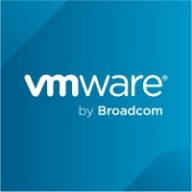

Opsview and VMware vCenter offer different strengths appealing to various user needs. Opsview excels in pricing and customer support, while VMware vCenter is preferred for its advanced features and significant ROI.
Features: Opsview is praised for its monitoring capabilities and integration options. It also offers straightforward deployment and responsive customer service. VMware vCenter stands out with comprehensive management tools and scalability, as well as robust support once installed. Users generally find VMware vCenter's features superior, especially for large-scale deployments.
Room For Improvement: Users suggest Opsview could improve in its customization, reporting functionalities, and ease of use for complex environments. VMware vCenter receives feedback for better documentation, easier updates, and a more user-friendly interface.
Ease of Deployment and Customer Service: Opsview is recognized for straightforward deployment and responsive customer service. VMware vCenter, though more complex to deploy, offers robust support once installed.
Pricing and ROI: Opsview users appreciate its cost-effectiveness but note a moderate ROI. VMware vCenter's higher cost is justified by significant ROI due to its extensive features and efficiency.
| Product | Market Share (%) |
|---|---|
| VMware vCenter | 1.0% |
| Opsview | 0.7% |
| Other | 98.3% |


| Company Size | Count |
|---|---|
| Small Business | 11 |
| Midsize Enterprise | 5 |
| Large Enterprise | 9 |
| Company Size | Count |
|---|---|
| Small Business | 15 |
| Midsize Enterprise | 5 |
| Large Enterprise | 18 |
Opsview is a modern and scalable SaaS or on-premise monitoring solution that gives your organization full visibility into on-premises and cloud IT infrastructure. It delivers simplified management and a single pane of glass view of your entire IT operations. The solution provides unified insight into dynamic IT operations on premises, in the cloud, or hybrid. Additionally, it can be used either in agent-based or agentless configurations.
You can use Opsview to monitor:
Operating systems
Networks
Cloud
VMs
Containers
Databases
Applications
Opsview Features
Opsview comes with an array of features, including:
AutoMonitor express scan: This feature makes it easy for you to keep up with your
changing IT infrastructure by helping you find new Windows, VMware, and Azure hosts.
Business service monitoring: This enables you to see the health of all your end-to-end
business services in real time and in one place.
Autodiscovery: With this feature you can automatically discover and profile hosts in your environment, which helps you quickly populate information into Opsview for monitoring.
Network analyzer: Opsview provides you with a complete picture of your company's
network infrastructure via its Network Topology, Flow Collector, & NetAudit modules.
Customizable dashboards: Opsview dashboards give you a view of all your monitoring
metrics in interactive dashboards that are easy to create and maintain.
Customizable reports: With Opsview, reports connect to the Opsview Data Warehouse and present historical data collected by Opsview. The solution’s out-of-the-box reports include performance, SLA, and events.
Disaster recovery: Opsview gives your organization peace of mind with its disaster
recovery by restoring your Opsview system if needed.
Event handlers: Opsview event handlers allow for automation and proactive monitoring so that your users are not impacted.
Events viewer: The events viewer feature helps you easily see all the important events in your Opsview system.
High availability server: Opsview has a high availability monitor that offers protection to ensure that you never lose IT infrastructure visibility.
Multitenancy: Multitenancy makes it possible for your MSP to give control of Opsview to your end users. It also allows you to create new hosts and roles as well as users while using a secure, private environment.
Log analytics: This feature allows you to improve logging visibility, reporting, correlation, and alerting.
SNMP traps: With SNMP traps, you can reduce your network and server load and provide faster service to your customers.
Opsview Benefits
There are many benefits to implementing Opsview. Some of the biggest advantages the
solution offers include:
Extensible: Opsview can be used in agent-based or agentless configurations. In addition, it can sit above multiple monitoring tools, aggregating information into a single pane of glass.
Scalable: Opsview is very scalable. It can easily scale beyond 10,000 monitored devices via its distributed model that spreads monitoring across many monitoring engines. Its databases may be located on dedicated servers to further distribute load.
Functional overview: Opsview monitors your IT infrastructure, network and applications, and displays alerts. It is also designed to generate notifications and integrate with your other service management tools.
Flexible: Opsview has a flexible web framework, allowing dashboards and monitoring views to be easily customized and extended.
Integration: Easily integrate Opsview Cloud with your current operational tools, including help desks, service management, automation and notification tools
Automation: Automate the configuration and operation of your IT monitoring system using Opsview’s intrinsic automation capabilities. Allowing you to spend more time on projects that drive your business.
Opsview Cloud
Opsview Cloud gives your business 24/7 Saas Monitoring for your entire IT estate. Benefits include:
Reducing your infrastructure costs
Realigning your resources to focus on business value IT projects
Ensuring you have 24/7 monitoring
Utilizing Opsview experts to provide monitoring best practices/tips and tricks
VMware vCenter provides centralized management for virtual machines, offering enhanced resource control, high availability, and data protection. Its integration with NSX and vSAN simplifies infrastructure management, although improvements in pricing, licensing, and technical support are needed.
VMware vCenter streamlines the management of virtual infrastructures, facilitating scalability and elasticity through features like DRS, vMotion, and snapshot capabilities. While users appreciate its centralized control and extensive integration options, complexities in interface and upgrades are seen as challenges. Issues like fragmented licensing, difficult Fault Tolerance management, and high resource demands have been highlighted, alongside the need for enhanced security, monitoring, and seamless cloud integration. vCenter is widely used in data centers for overseeing large virtual environments, integrating cloud services, and providing infrastructure as a service.
What are the main features of VMware vCenter?
What benefits and ROI should users expect?
Industries such as IT, finance, healthcare, and government deploy VMware vCenter to manage their extensive virtual environments. Users rely on its automation and centralized management capabilities to ensure high performance and uptime in data center operations, often leveraging it to integrate with cloud services.
We monitor all Server Monitoring reviews to prevent fraudulent reviews and keep review quality high. We do not post reviews by company employees or direct competitors. We validate each review for authenticity via cross-reference with LinkedIn, and personal follow-up with the reviewer when necessary.